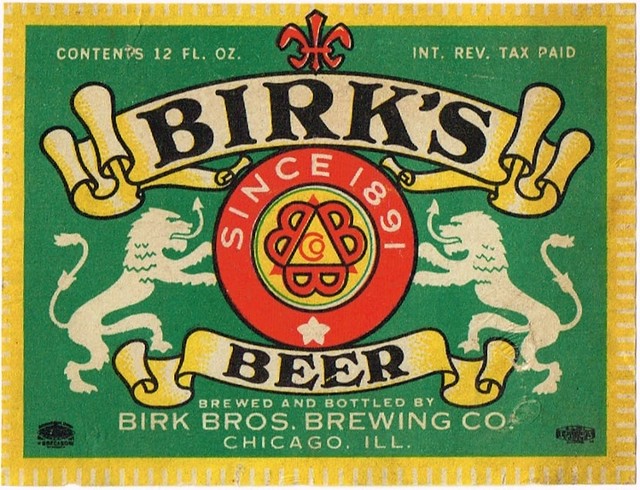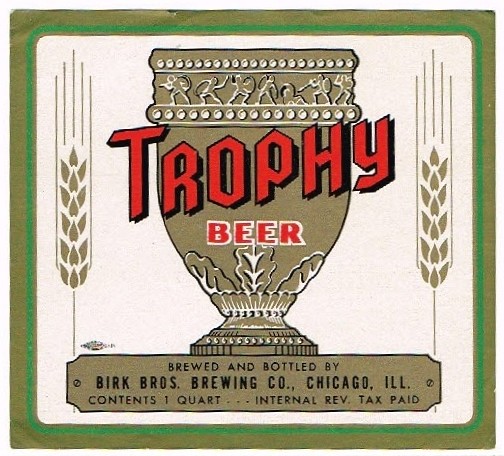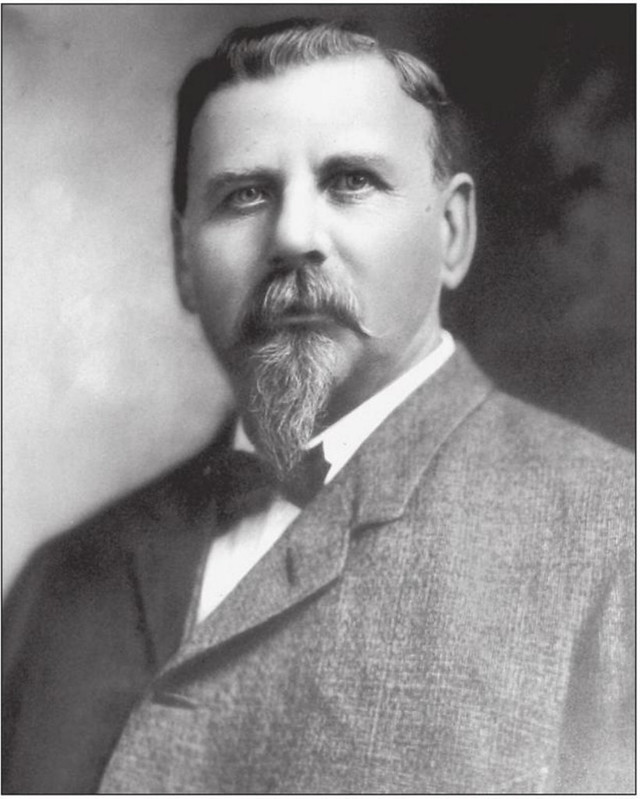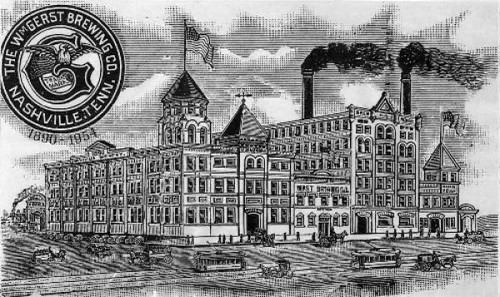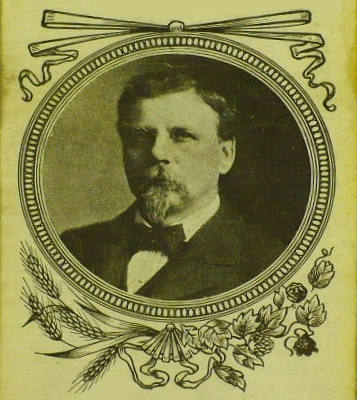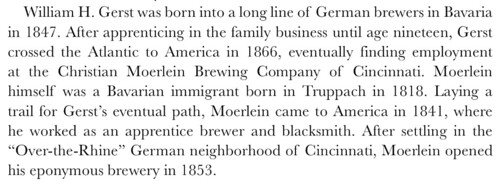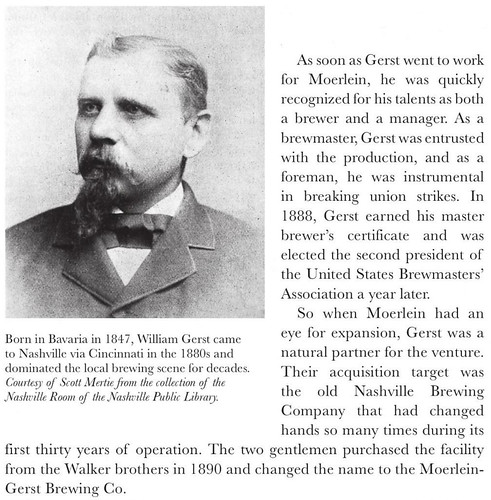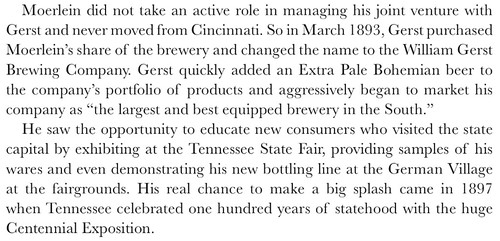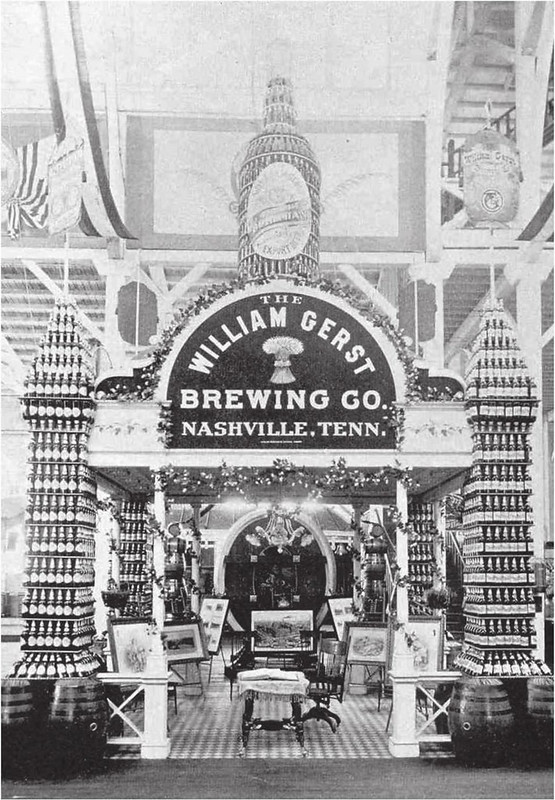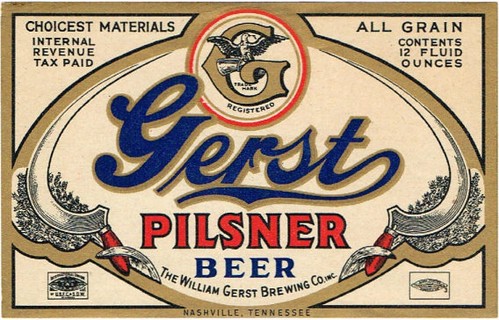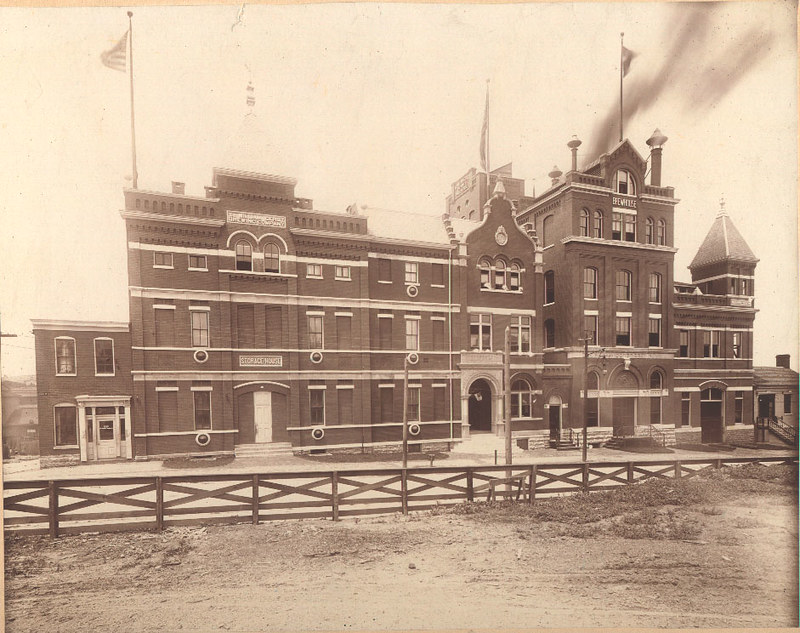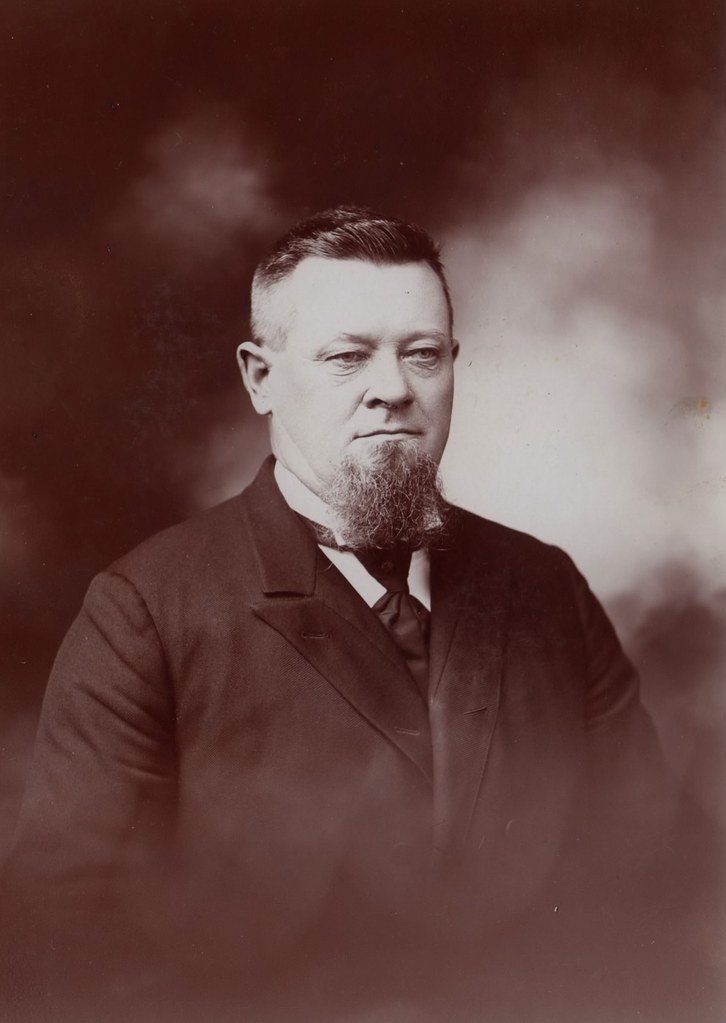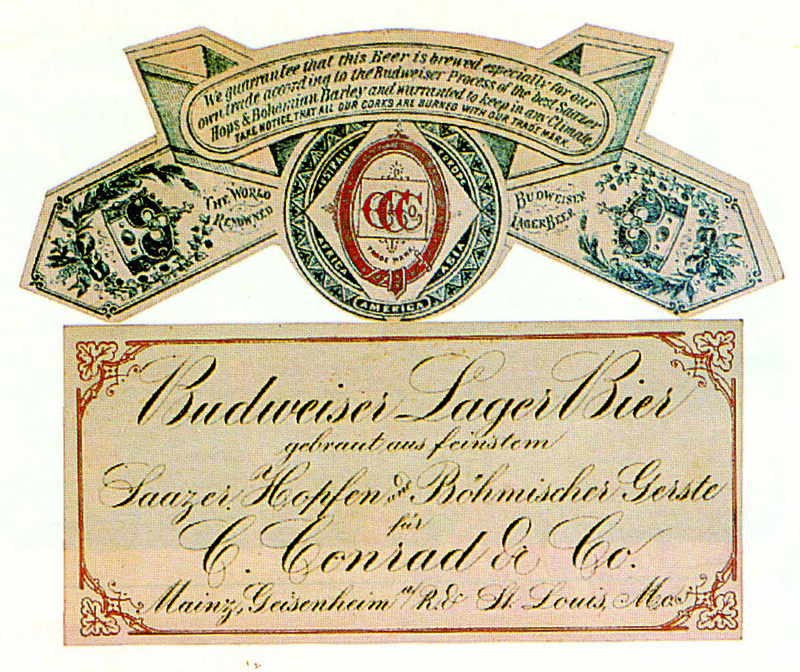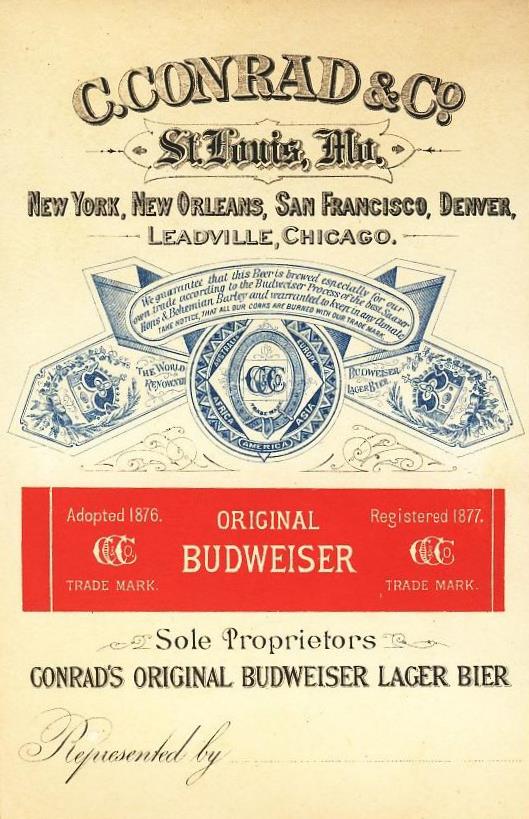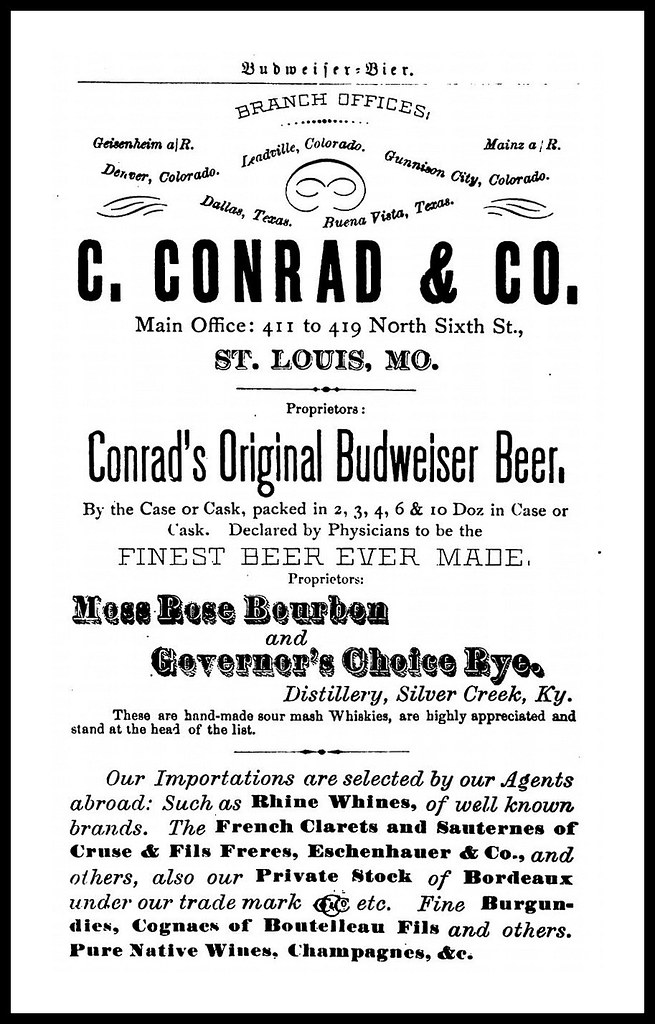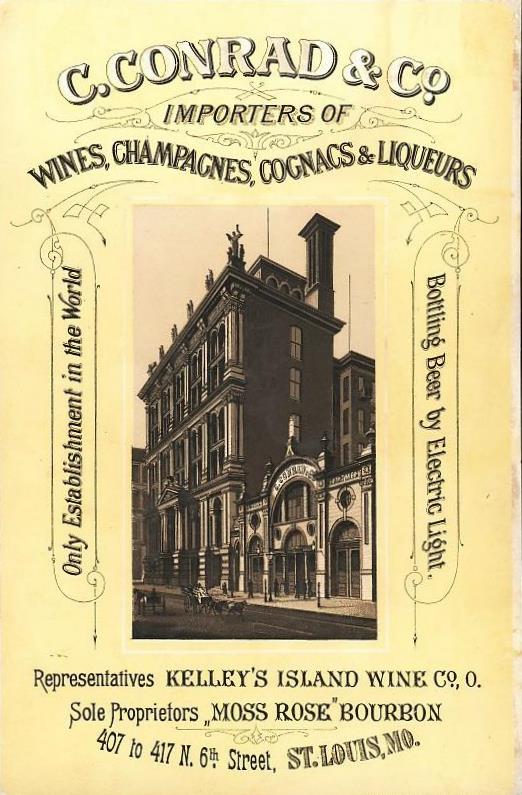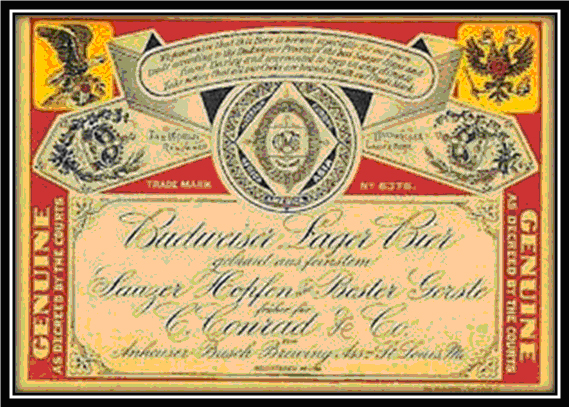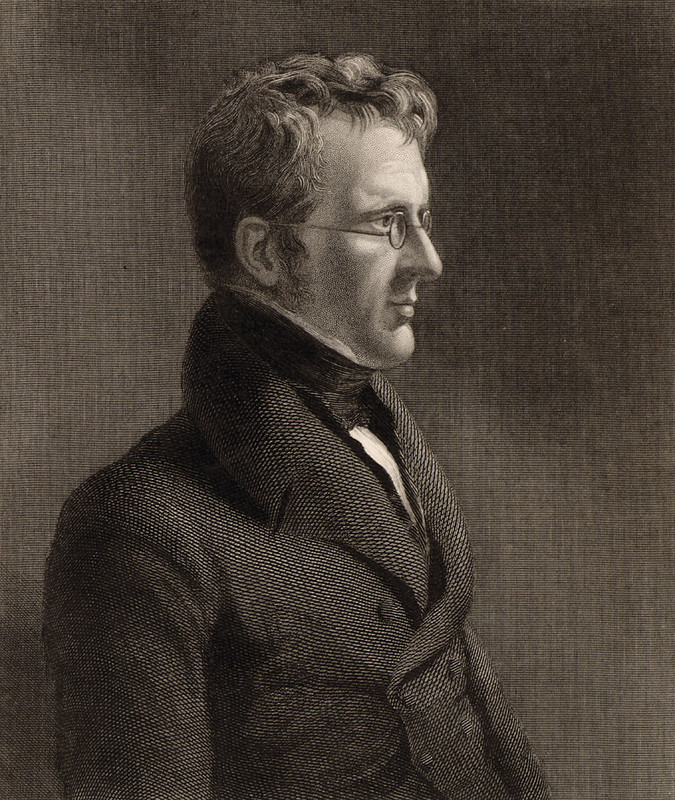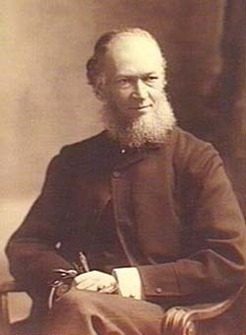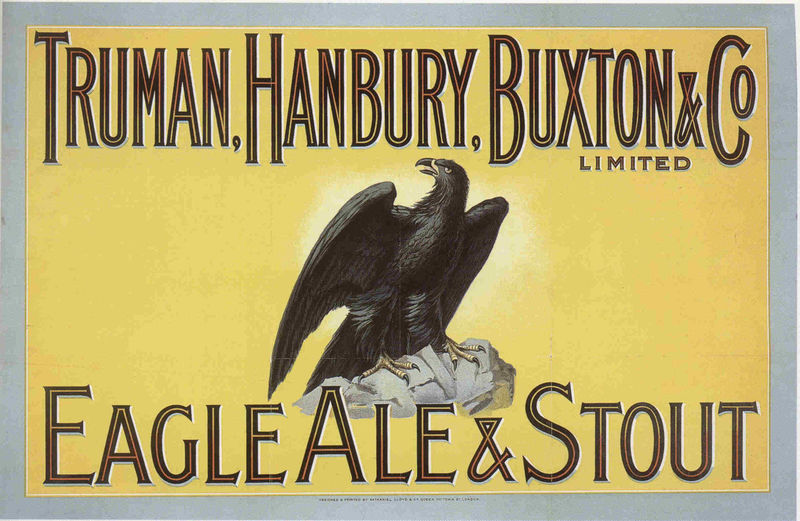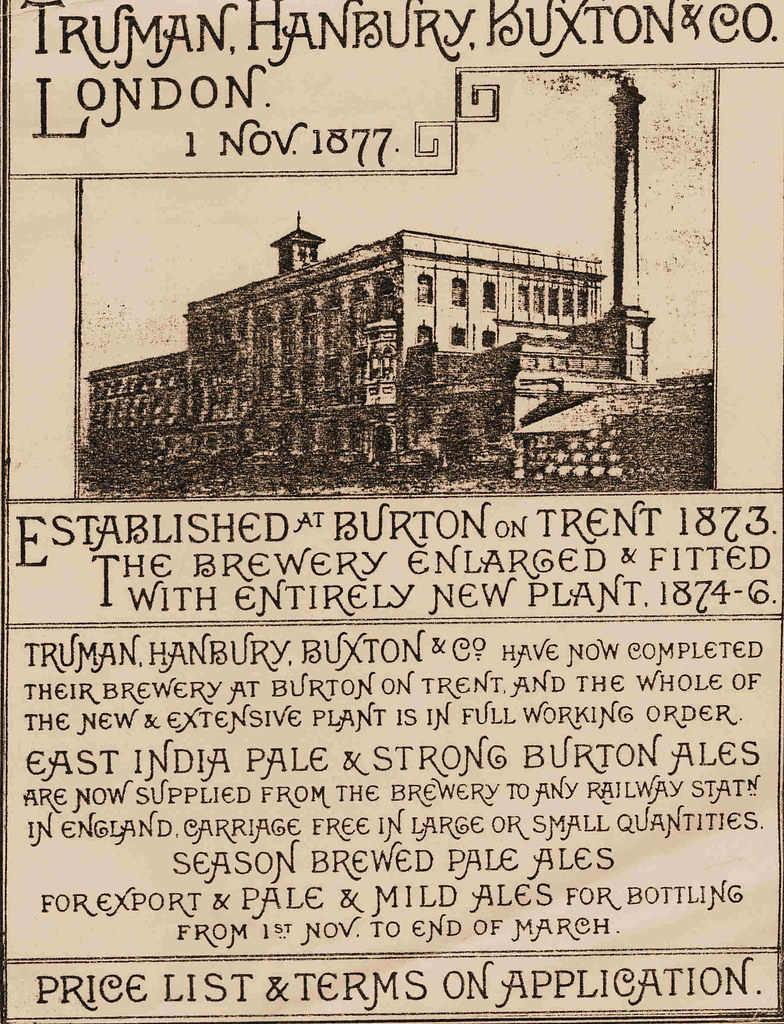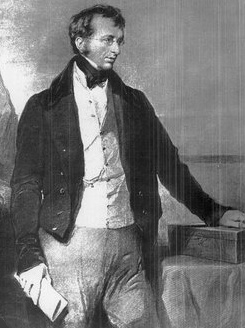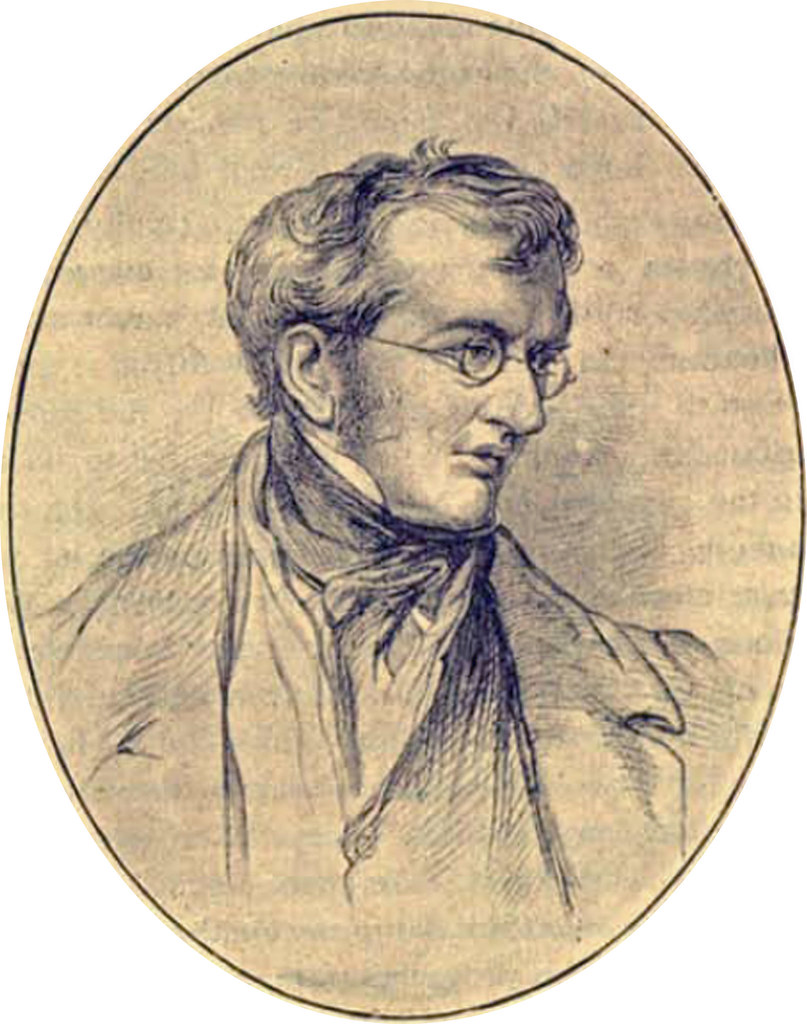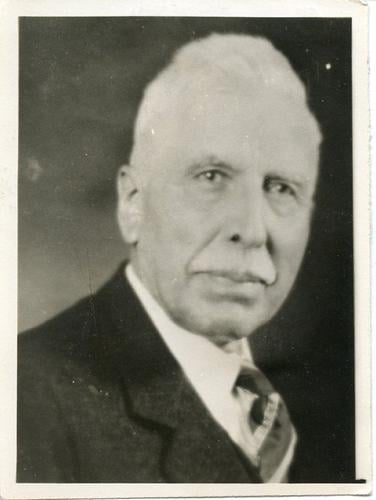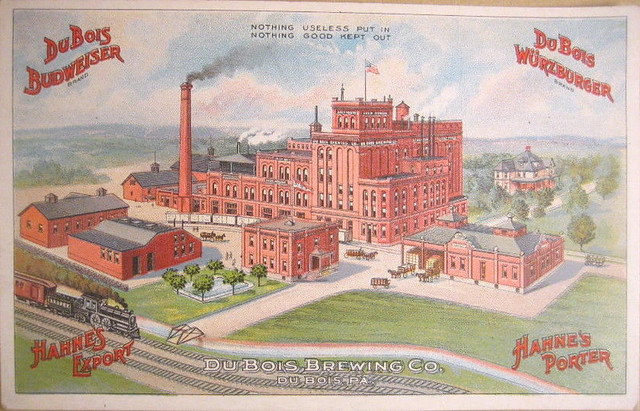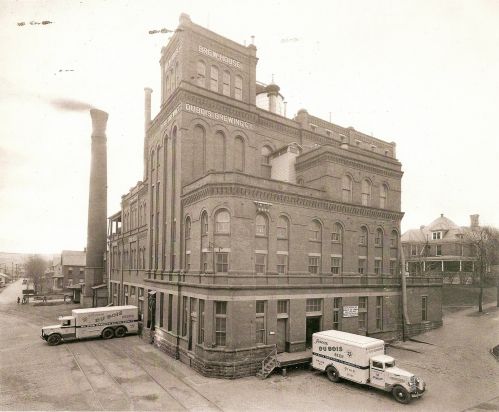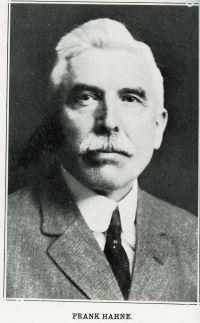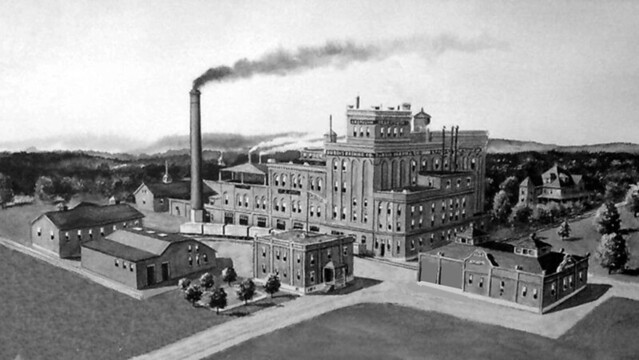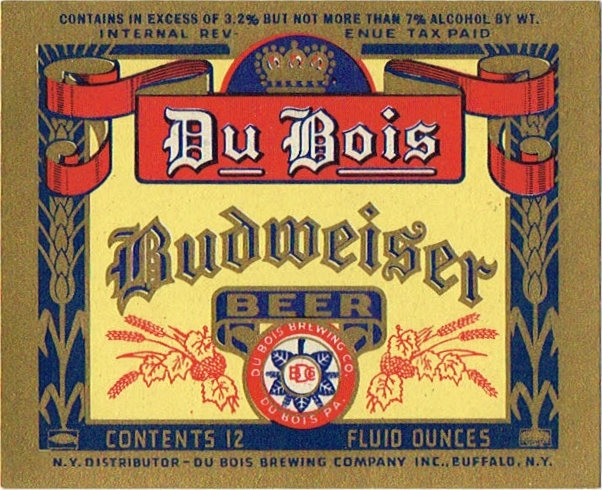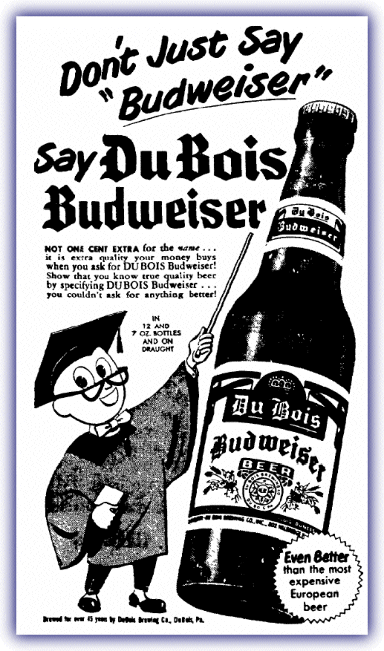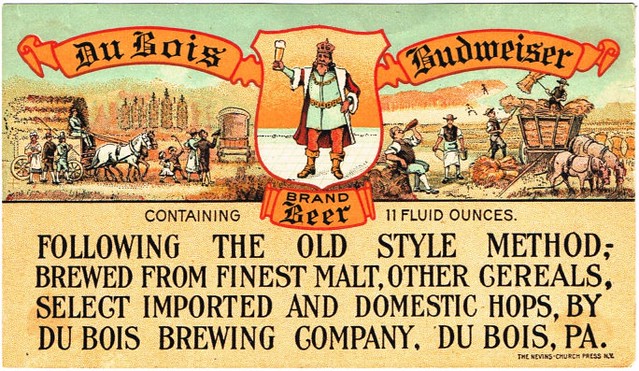
Today is the birthday of Edward John Birk (April 2, 1867-April 22, 1940). Edward was the son of Jacob Birk, who co-founded Chicago’s Wacker & Birk Brewing Co. When Jacob retired, he bought the Corper & Nocklin Brewery for his sons, renaming it the Birk Bros. Brewing Co. Edward and his brother William ran the brewery through Prohibition, and it successfully reopened after repeal, and continued until closing on September 15, 1950.

That’s definitely famed Prohibition agent Eliot Ness in this photo (at the far end of the table, on our left) and it’s possible that the man next to him was Edward J. Birk during his trial in 1922, during prohibition.
The New York Times reported on the case in 1922:
FIRST BREWERY TRIAL ENDS IN AN ACQUITTAL
E.T. Birk of Chicago is Freed by a Jury of Charge of Transgressing Voltead Act.
A precedent was established in the Federal Court here today when a jury before Judge Wilkerson acquitted Edward J. Birk, president of Birk Brothers’ Brewery, who was accused of aiding in the manufacture and sale of beer of illegal alcoholic content.
The acquittal came after a four-day trial. When the case started F.J. Birk, Vice President of the brewery; F.J. Wetzel, shipping clerk, and Leonard Dressler, brewmaster, also were on trial. The cases against these defendants were dismissed because the Government found that its witnesses had vanished. [my emphasis]
This was the first case tried here before a jury in which officials of a brewery were accused of violating the law….
The jury reached a verdict after three and a half hours’ deliberation. When the verdict was read Birk walked up to the jury box and announced in a loud voice: “Gentlemen of the jury, I want to thank you from the bottom of my heart.” He then turned to the Judge and said, “And I want to thank you, too, Judge Wilkerson.”
While a controversy was pending over taxes claimed by the Internal Revenue Department a squad of prohibition agents sent from Washington in the Spring of 1921 raided loop saloons and seized twenty-five barrels of Birk Brothers beer.
The brewery was closed by the Government and remained closed until April of this year, when at a hearing of forfeiture proceedings instituted by the Government, it was turned back by Judge Carpenter to its owners.
Can’t you just hear the theme song from The Untouchables in the background?”
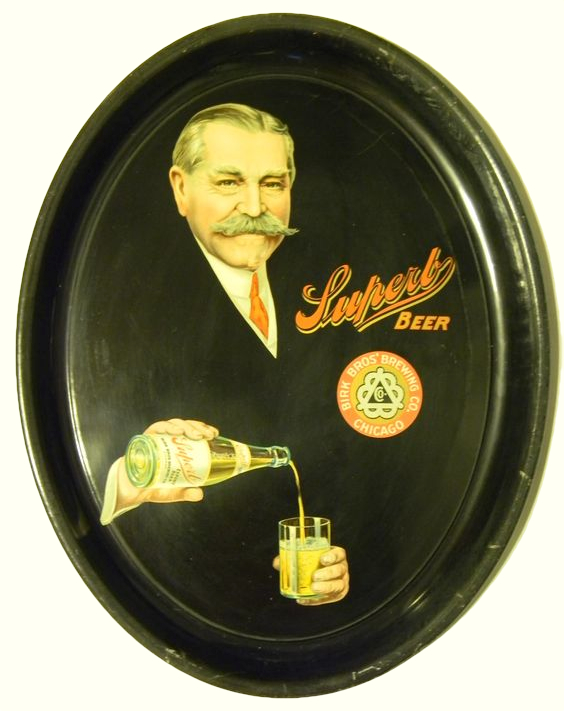
Here’s some biographical info from “Historical Review of Chicago and Cook County and Selected Biography,” by A.N. Waterman:
Birk, his father having been born in Germany and being in early manhood a harnessmaker. He came to Chicago in 1854, prospered in trade and business, and for many years conducted a hotel on West Lake street. In 1881 he became associated with Fred Wacker & Son, then engaged in the malting business, and in the following year became associated with the firm in brewing operations under the firm name of the Wacker & Birk Brewing Company. In 1891 the business was sold to the English corporation, the Chicago Breweries, Limited, and Jacob Birk and his two sons, William A. and Edward J., incorporated the Birk Brothers’ Brewing Company. Since the founding of the company, at that time, William A. has been president and Edward J. Birk, secretary and treasurer. The basis of the complete and extensive plant was the Corper & Nockin brewery, purchased in 1891, and since remodeled and enlarged. The elder Birk retired from his connection with the business in 1895.
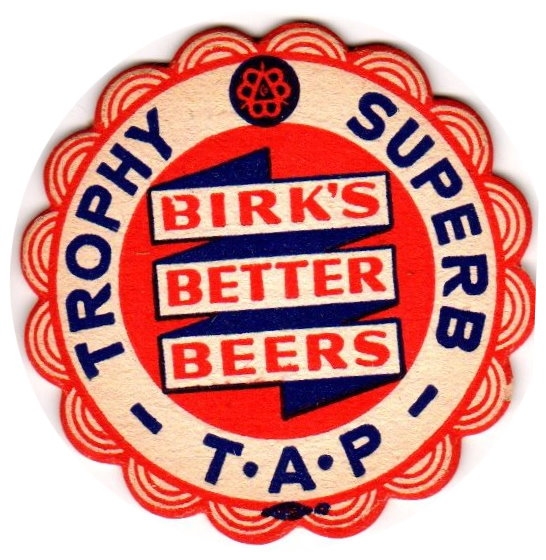
And here’s another account, from the “History of Cook County, Illinois,” published in 1909:

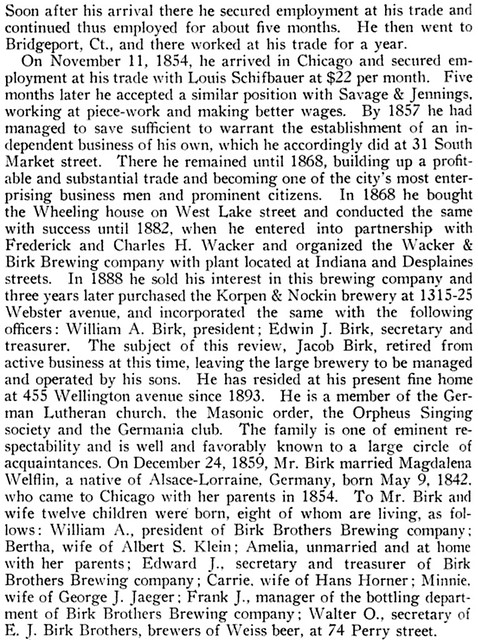
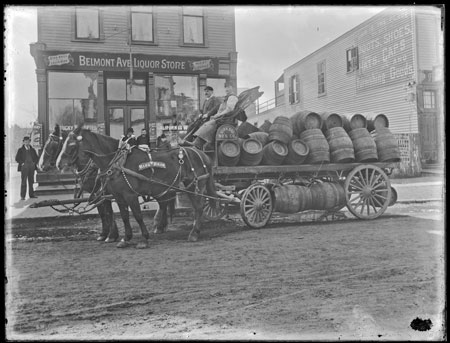
Birk Brothers Brewing Company delivery wagon on Belmont Avenue, around 1895.
